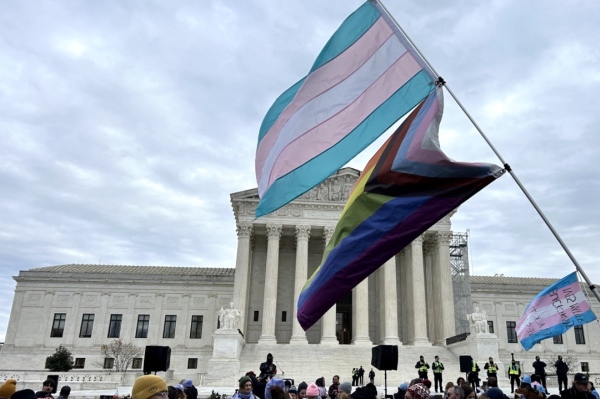Sexual Violence Reports in Target Spike After Transgender Bathroom Policy: Study

A new study documents the increase in sexual violence incidents at Target stores since the company officially announced two years ago that men who identify as female can enter women's bathrooms and changing rooms.
The study, "Gender-Inclusion Policies and Sexual Violence: A Longitudinal Analysis of Media Reports at Target Stores," was authored by Paul Dirks of the Canadian Woman Means Something campaign and was released Friday. The analysis surveys the relevant literature on sexual violence, and categorizes and charts 220 media-reported sexual offenses in Target locations from 2003 to August of 2017, aiming to determine if any association exists between their gender-identity access policy and reported incidences in their stores.
"The three-season forced-category measurement found a 2.3x increase in the amount of upskirt incidents after the policy, and a 2.9x increase in peeping tom incidents after the policy," the study found, highlighting the significant rise of voyeurism-related and peeping Tom offenses.
Of the 220 incidents measured, six were counted as two separate offense types, according to the report. Of these 226 offenses, nearly 30 percent were labeled "upskirt offenses," where perpetrators attempted or did look up the skirt or clothing of a woman; 27 percent were non-upskirt related voyeuristic offenses; and 18.6 percent were classified as "indecent exposures." Thirty-four percent of all the incidents involved minors. All the offenses were perpetrated by males and almost all of the victims were female.
Thirty-eight of the incidents were considered sexual assaults while 15 were categorized under "lewdness," the data show.
A chart in the study reveals in the 16 months that followed the April 2016 policy change — May 2016 to August 2017 — 80 sexual offenses occurred, nearly twice the number of the previous 16 months.
"While it is possible that a general rise in voyeuristic sexual offenses relative to other offenses may account for some of this increase, the magnitude and precise timing of the increase suggests that Target's gender-inclusion policy accounts for the bulk of it," Dirks said in a WMS press release obtained by The Christian Post.
"The most likely hypothesis to explain our findings is that Target's policy signaled to sexual offenders that voyeuristic offenses would be easier to perpetrate in their stores than elsewhere."
Dirks was among those who publicly testified against Canada's infamous C-16 bill, which added gender expression and identity as protected categories to the Canadian Human Rights Act.
Since announcing its controversial policy, the retail giant has faced a significant consumer backlash.
CP reported last summer that the American Family Association delivered to Target's offices 1.5 million signatures of consumers pledging to boycott the company, but the retail giant refused to reverse course.
In April 2017, amid economic reports that Target's stock was tanking, people familiar the fallout over the bathroom policy told The Wall Street Journal that CEO Brian Cornell said he was frustrated how the bathroom policy was made public. The controversial decision was announced on a blog post in the midst of the swirl around North Carolina's hotly contested bathroom bill known as HB2. Cornell reportedly told staff that he would not have approved the move to flaunt the policy change as the company did not adequately assess the risk, and the ensuing backlash was self-inflicted.





















